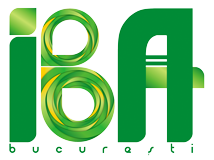Food Safety First - Identifying and reducing contaminants
Follow-up
The event took place online, via Zoom, on November 13th, with 120 participants registered, of whom nearly 100 attended the presentations. The participants represented 9 countries across Europe and Africa, including Romania, Belgium, France, Italy, Finland, Portugal, Spain, Nigeria, and Congo, and came from various sectors such as research and academia, SMEs, NGOs, and public organizations (e.g., funding agencies, food safety authorities).
Joris Van Loco from Sciensano (Belgium) emphasized the importance of risk assessment as a tool for both health (understanding risks and identifying exposure routes) and policy (taking further steps to protect public health, establish legal limits, and prioritize substances) - see ppt.
Gratiela Gradisteanu from the University of Bucharest (Romania) highlighted the vital role microbiomes play in food safety throughout the production chain and how managing microbial diversity is key to reducing foodborne illnesses - see ppt.
Petru Jitaru from ANSES (France) spoke about the challenge of mitigating Hg toxicity in predatory fish due to inconsistent effects of cooking, even within the same species, likely due to differences in physicochemical properties (e.g., fat and water content, age) - see ppt.
Daniela Borda from “Dunarea de Jos” University of Galati (Romania) discussed increased exposure to L. monocytogenes among vulnerable groups during temperature fluctuations in food storage and the need for comprehensive risk evaluation that includes consumer practices - see ppt.
Veronica Lattanzio from ISPA-CNR (Italy) addressed the impact of climate change as a driver of emerging food safety risks, stressing the role of AI, biotechnology, and participatory approaches outlined in the FoodSafety4EU SRIA - see ppt.
Anca Becze from ICIA (Romania) presented strategies for managing logistics-linked contaminants in the food chain, emphasizing the importance of regular staff training on contamination risks, handling techniques, and hygiene standards - see ppt.
Ioana Balan from the University of Life Sciences in Timisoara (Romania) showcased challenges in ensuring food safety in low-income countries, with case studies from DR Congo and Nigeria - see ppt.
An interactive session using Mentimeter was also held, where participants answered seven questions (plus one about their country of origin). The answers are commented below:
How concerned are you about contaminants in your daily food products?
(Scale from 1 to 5)

Respondents are quite concerned about contaminants in their daily food products.
In your opinion, what are the most common sources of food contamination?
The most common sources of food contamination are considered: soil, water and air.

Which type of food contaminant do you think poses the greatest risk to public health?

Pesticides were identified as posing the greatest risk to public health, with another option being nearly as significant.
What is the first word that comes to mind when you think of "food safety"?

“Health” was, by far, the word most frequently mentioned by the respondents.
Which of the following methods do you believe is most effective in reducing food contaminants?

As expected, “stricter regulations” is considered the most effective method in reducing food contamination.
Which segment of the food chain do you believe is the most vulnerable to contamination?

Although few answers were provided, “Farming/Production” and “Processing” are considered the most vulnerable to contamination.
Do you think the food industry does enough to reduce contaminants in food? (Yes/No)

The majority of respondents indicates that the food industry doesn't do enough to reduce contaminants in food.
Gabriel Mustatea, PhD
Organizing Committee
